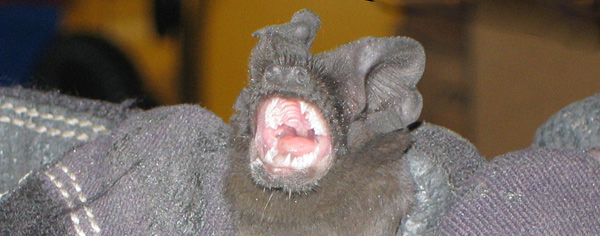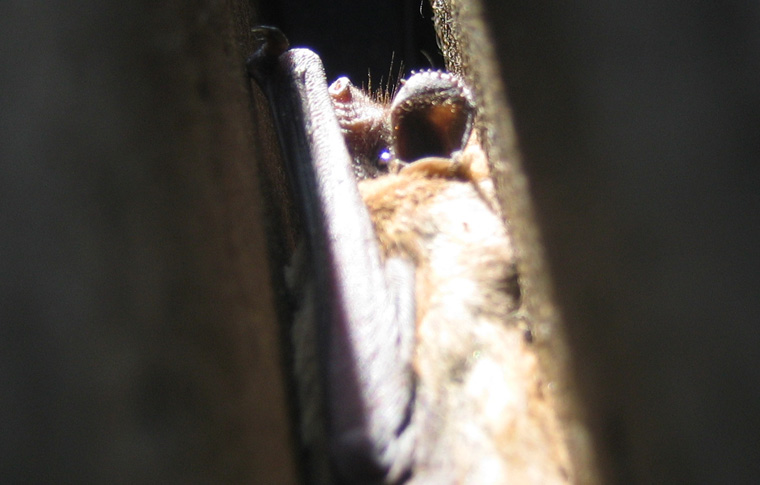- info@wildlife-removal.com
Call us for help in your town
Wildlife Removal Education
Bat Repellents
Need bat removal in your hometown? We service over 500 USA locations! Click here to hire us in your town and check prices - updated for year 2020.
Even though bats are considered to be relatively good animals, the looks of a bat can be both startling and scary for people who stumble upon them in the attic or even inside the house. Apart from the fact that they are disease carriers and their droppings can be infectious, they largely help humans by eating off blood sucking insects like mosquitoes and moths.

Most people do not like bats in their house and have searched for ways to get rid of them. A lot of these people in turn look for repellents that would deter the bats from entering the house, but the effectiveness of repellents in getting rid of bats is questionable as they rarely solve the problem. Several types of natural and chemical bat repellents exist and are generally available for interested homeowners.
Natural repellents
Mothballs are effective at dealing with and getting rid of bats but while they might be harmful to bats, they are also harmful to humans and can cause cancer. The Naphtalene smell of mothballs is so strong and touching it alone can trigger sensitivities to the substance. It works best when used in closed up spaces.
Bright lights placed at entry or exit points may be combined with mothballs or used alone. The nocturnal animal finds it offensive and may leave for another den. The downside is that the bats are likely to look for and fly to the dark corners; bright lights also invite more pests into the space, like moths and mosquitoes, both of which are food for the bats.
Loud noises also make your attic less conducive for the bat, but for how long? They don't work, because bats crawl into tight spaces away from sound. They also just don't seem to care. Read Bright lights & loud noises for bats — does any of it work?
Cinnamon has a strong fragrance that bats cannot stand and so if placed near their roosts may irritate into leaving.
Peppermint is an aromatic herb that irritates bats. Placing either leaf or oil close to the bats' entry and exit points is bound to make the bats leave the house.
Ammonia: The vapor irritates bats as well as most other animals. Ammonia - soaked rags or bowls of it should be placed in attics and other hideouts. Read about Ammonia for Bats – Will it work?
Fiber Glass: All bat areas such as the attics and ceilings are insulated with this material. When they come in contact with this insulation, bats feel an irritation on their skin.
Other natural repellents include Green Tea, Human hair and Coyote urine.
Store-bought repellents
These products come in spray or gel form. They should be applied at night when the bats have exited to look for food. A quarter of each component should be sprayed on every 125 square feet area. Examples are:
4-THE-BIRDS GEL: This is available in calking tubes and is applied with a special calking gun. It can be used on a bat's roost sites both those inside the house and externally. The gel is sticky and very thick. It adheres to the surface and can stay for a long period. Whenever a bat lands on the gel, it leaves. The gel can be used for entry points and louvers vents.
4-THE-BIRDS LIQUID: This is the same material as the gel but comes in a liquid form which is sprayed on hard to reach entry spots. The substances in this product aren't harmful to the bats; they only create a surface that the bats would want to avoid.
PEST RID: This is another granule or liquid product that is believed to be harmless to the bats. They release tastes and odors that bats cannot withstand. Spray on their hiding points and the entry points. This solution is effective for a month at the most.
What about poison? Read Should I ever poison a bat?
Ultrasonic devices:
Transonic PRO has an array of ultrasonic and sonic signals that changes constantly and are emitted to disturb the bats habits, communication and sleep, resulting in their leaving the place. The emission also interferes with echolocation, making the area inhospitable for bats.
ET Pest Control exhibits sound waves at varied frequencies. The device can be plugged into any outlet
Homeowners that choose to utilize bat repellents should familiarize themselves with all the pros and cons of each method, and also the legalities involved. It is safe to say though, that they frequently disappoint and nothing can beat live trapping and exclusion in deterring bats.
Go back to the Bat Removal page. do-it-yourself is very nice in many fields, but hiring a professional is a good idea for bat removal. Bat removal - Are the Pro's Really Best? How to get rid of bats out of the attic when you have a bat phobia
What repellents can you get for bats?
A few moments spent searching online will unearth a plethora of “bat repellents,” all of which are designed to scare/annoy/irritate an entire colony of bats away. In theory some of them have the potential to work, but reality very rarely works out the same way.

Lights
Lights actually CAN work to get rid of rats in a space. They are nocturnal animals and, therefore, don't like the light much, particularly bright lights. If you were to open the hatch into your attic, turn on the strongest and brightest light you owned, and opened up a space fo the bats to get out, they would more than likely all fly right out. Bright light means danger for them - they aren't active during the day. It will be their first response to find a place that is dark to settle down again ... that won't be in your attic, for example.
You can't have lights on all the time, though. And if you remove the lights, the bats can just come right back because you haven't actually done anything to prevent that from happening. Constant light will be a constant addition to an already expensive energy bill, and lights will attract other things - insects, moths, etc.
If you need to quickly move bats out of a particular area, turning the lights on will certainly wake them up, and it will more than likely scatter them too. The bad side of this is that they won't stay scattered. As soon as your back is turned and the lights are turned back off again, they'll just come right back ... with a vengeance!
Sound
This is another idea often presented by the genius minds on the internet, but the same theory works here as it does with using lights to repel bats - as soon as you take away whatever the repellent is meant to be; in this case, sound; the bats will be back.
The Truth
In reality there are very few repellents that actually work for any wild animal invaders. You can't rely on things that are meant to taste and smell bad. If they did really smell and taste *that* bad, they would have worked as a repellent many years ago and we would be out of a job. (We're not. We're definitely, definitely not.)
In almost every single case, relying on repellents to get rid of nuisance wildlife, especially bats, will just result in not very much. Whatever animal might be briefly eliminated from the area as a result of that repellent will just come back. You might as well keep hold of your hard-earned cash and hand it over to a wildlife control exterminator who will do the job properly ... and the bats won't come back!
Go back to the Bat Removal page, or learn about bats in the attic with my Bats in the Attic guide.


















